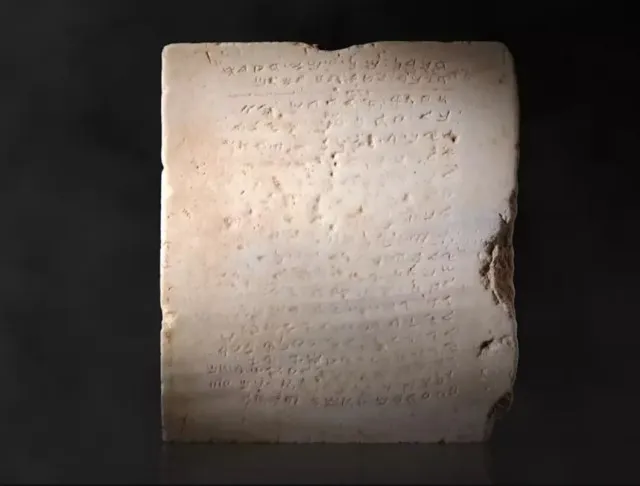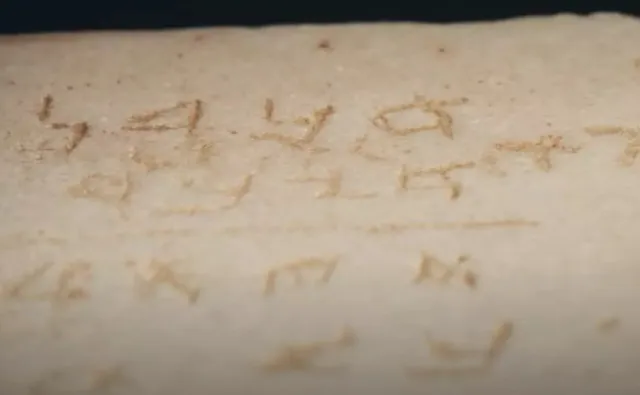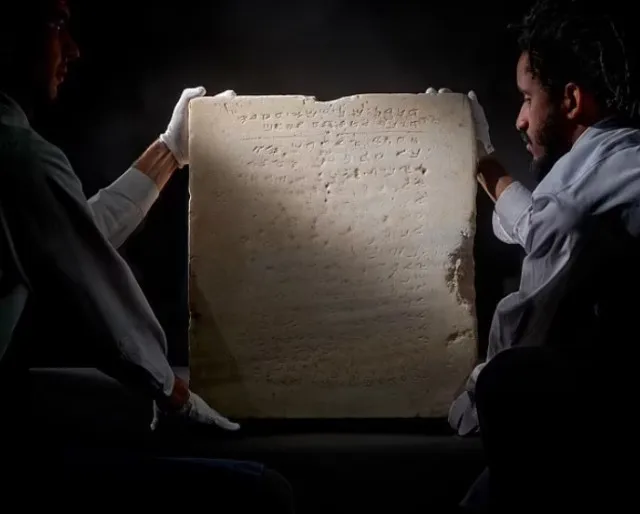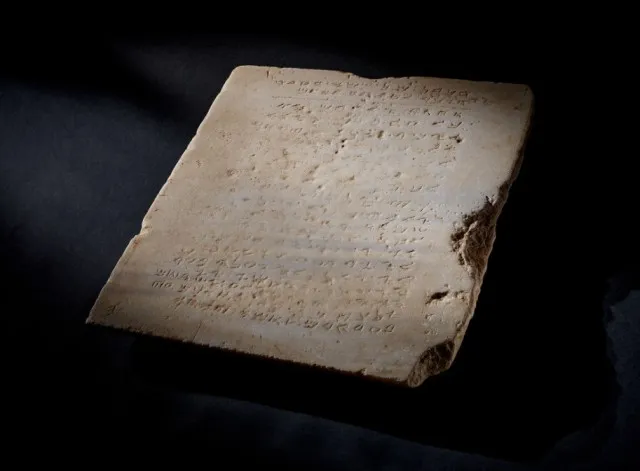The oldest stone tablet featuring the 10 Commandments, which was accidentally used as a paving stone, is expected to sell for $2 million.
An extraordinary piece of history is set to go on auction, and it could be yours for a price of $2 million.
This item is a stone tablet inscribed with the 10 Commandments, and it has a fascinating backstory.

Discovered in Israel, this tablet is believed to be around 1,500 years old.
Oldest stone tablet featuring Bible’s 10 Commandments set to sell for up to $2M after paving slab use.
The tablet was once used as a paving slab outside a home
Researchers initially uncovered the tablet near a railway line in 1913, but they did not recognize its significance at the time.
They repurposed the two-foot tall, 115-pound stone as a paving slab instead of preserving it.
For over 30 years, it was laid face-up outside a home, where countless people walked over it without knowing its true value.

The stone remained unnoticed until someone finally recognized the ancient inscriptions.
Written in Paleo-Hebrew, a long-forgotten language, the tablet’s text became a topic of interest for historians.
Despite its weathered condition, the tablet is now celebrated as one of the oldest known carvings of the Ten Commandments.
Stone tablet of Bible’s 10 Commandments with unique features
While many people are familiar with the traditional wording of the Ten Commandments, this tablet has a notable difference.
The third commandment usually advises against using the Lord’s name in vain. Instead, it instructs the reader to pray on Mount Gerizim.

This location holds religious significance for the Samaritans, a group that separated from mainstream Judaism over 3,000 years ago.
The presence of this specific commandment suggests that the tablet may have belonged to this ancient group.
The Samaritans have a unique interpretation of the commandments, which reflects their distinct religious beliefs.
Oldest stone tablet of 10 Commandments once used as paving slab is set to sell for up to $2M
The tablet is scheduled to be auctioned at Sotheby’s on December 18th.
Richard Austin, Sotheby’s global head of books and manuscripts, emphasized the importance of this artifact.
He described it as a crucial link to the beliefs that have shaped Western civilization.

Owning this tablet would mean possessing a tangible piece of cultural heritage that connects people to ancient traditions and moral codes.
As the auction date approaches, interest in the tablet is growing.
Collectors and history enthusiasts alike are eager to bid on this remarkable item.
The tablet’s significance goes beyond its monetary value; it represents a connection to a rich, influential history.

“This remarkable tablet is not only a vastly important historic artefact, but a tangible link to the beliefs that helped shape Western civilisation,” Richard Austin said.
“To encounter this shared piece of cultural heritage is to journey through millennia and connect with cultures and faiths told through one of humanity’s earliest and most enduring moral codes,” he added.